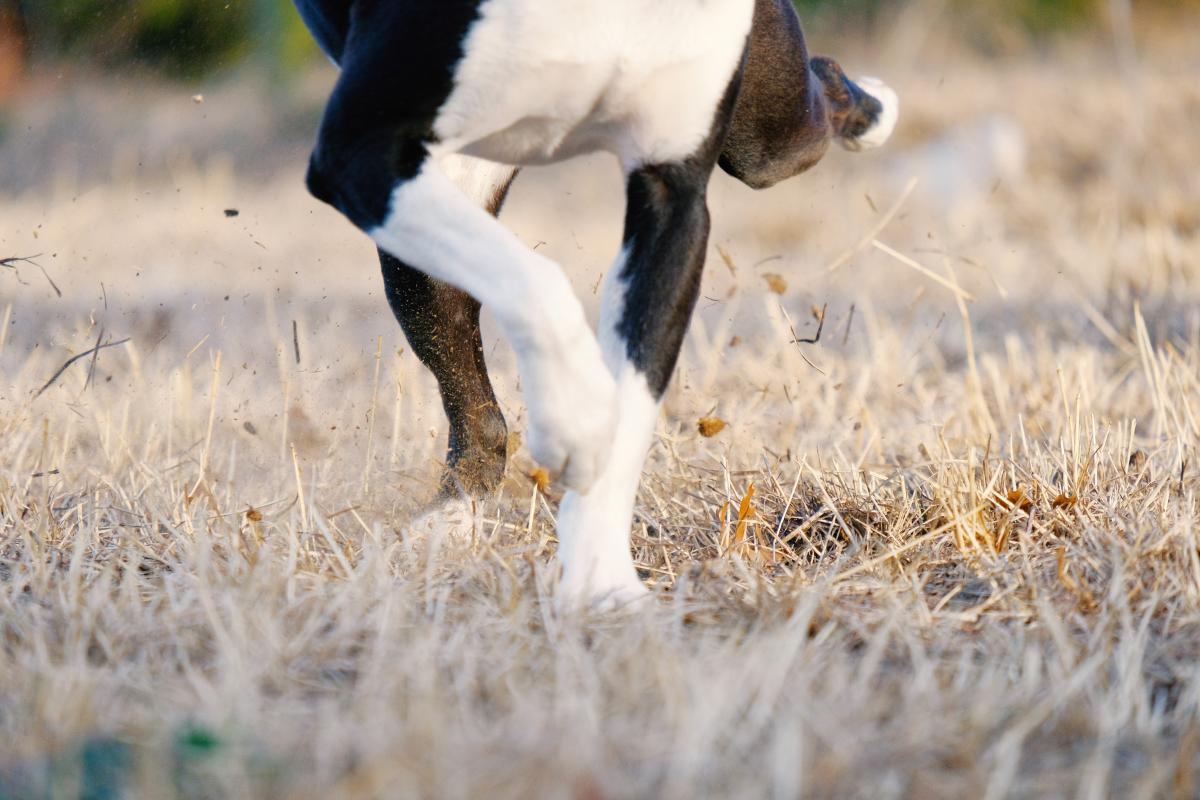Tendinitis in Dogs - Symptoms, Causes and Treatment



See files for Dogs
Tendons are ligaments of connective tissue (collagen fibers) that connect muscle to bone. Thank you to them, the force of muscle contraction is transmitted to the skeleton to produce movement. When these tendons become inflamed, a process known as tendinitis occurs, usually causing pain and lameness. Prolonged inflammation of the tendons can lead to a tear that may require surgery.
The following AnimalWised article explains what tendinitis is in dogs, its symptoms, causes, and treatment.
What is tendonitis in dogs?
Tendinitis is defined as the occurrence of an inflammatory process in a tendon, which is the end part of the muscle attached to the bone. Tendons are a type of strong, fibrous connective tissue. When the muscle contracts, the tendon pulls on it, allowing movement. So when tendons become inflamed, the movement of the joint is also affected. The onset of the disease is usually very subtle and manifests as intermittent lameness that worsens with exercise.
Depending on the chronicity of the process, a distinction can be made between acute tendinitis and chronic tendinitis. Acute tendinitis is usually associated with injury and trauma, while chronic tendinitis results from repetitive heavy loads such as running and jumping that damage the tendon and its surrounding tendon sheath.
Although any tendon can be affected by this change, tendinitis of the dog's hind leg is less common than tendinitis of the front leg. Calcification of the tendon is also common.
What is the difference between tendinitis and tenosynovitis?
As mentioned above, tendinitis is the inflammation of a tendon, while tenosynovitis is an inflammatory process affecting the synovial sheath of tendons. A synovial sheath is one of the two membranes of the tendon sheath that surrounds a tendon. The distinction between the two processes is important because their treatment and prognosis are different.
You may also be interested in this other article, where we look at the reasons why my dog suddenly can no longer walk on his hind legs.
Symptoms of tendonitis in dogs
The most important clinical sign associated with tendinitis is lameness, so tendinitis should always be included in the list of differential diagnoses in lame dogs. Generally, lameness associated with tendonitis worsens with exercise and improves with rest.
In addition to lameness, a dog with tendonitis often exhibits the following symptoms:
- Pain on palpation and/or movement of the affected joint.
- Heat in the affected area.
- Swelling of the affected area.
To try to relieve the pain, your dog will likely hold up the affected paw. You may also notice a decrease in athletic performance in athletic dogs.
Intermittent lameness due to a painfully inflamed tendon leads to compensatory patterns and gait changes that affect other parts of your dog's body.
Prolonged overuse leads to tight muscles and the development of spasms and painful trigger points. Because tight muscles are prone to injury (such as muscle strains), there is a risk of further damage.
You may be interested in this other article, where we reveal the 5 signs of pain in dogs.
Causes of tendonitis in dogs
Generally, tendinitis occurs as a result of tendon overuse or microtrauma caused by repetitive motion or strenuous activity. Therefore, tendinitis is a particularly common pathology in sporting or working dogs (such as rescue dogs, sheepdogs, sled dogs, etc.).
In some cases, the causes may be infectious if the wound is contaminated.
Diagnosis of tendonitis in dogs
Generally, information from the animal's medical history, clinical picture, and data from orthopedic examination are sufficient to make the diagnosis of tendinitis in dogs.
However, to make a definitive diagnosis, you must resort to imaging techniques. Ultrasound is the technique of choice because it allows you to see the thickening of the affected tendon, the extent, and severity of tendon damage, and to evaluate the synovial structures surrounding the tendon. Occasionally, it may be necessary to supplement ultrasonography with advanced imaging techniques such as CT or MRI.
In addition, chronic tendinitis may require exploratory arthroscopy to determine the degree of involvement and inflammation of the tendon.
You may also be interested in this other article where we talk about arthritis in dogs, its causes and treatment.
Treatment of tendinitis in dogs
Having described what tendinitis in dogs is and how it is diagnosed, we must explain how it is treated. In general, the treatment of a dog with tendinitis is based on the following points:
- Rest: complete rest is not required, but strenuous exercise and physical activity should be avoided for at least 2–4 weeks. After rest, activity should be resumed gently and gradually.
- Anti-inflammatory and analgesic therapy: non-steroidal anti-inflammatory drugs (NSAIDs) should be administrated systemically and/or locally.
- Rehabilitation: includes physical therapy (with electrical stimulation, ultrasound, laser therapy, etc.), manual therapy (with massage and stretching), and therapeutic exercises to strengthen muscles and relearn gait. An increasingly used therapeutic alternative is hydrotherapy. Swimming and working on underwater treadmills are very useful to relearn walking and further strengthen the muscles.
- Surgical Treatment: surgical treatment may be considered for chronic tendinitis that does not respond to anti-inflammatory treatment or rehabilitation.
Continue reading in this other article, where we present you the best natural anti-inflammatories for dogs.
This article is purely informative. AnimalWised does not have the authority to prescribe any veterinary treatment or create a diagnosis. We invite you to take your pet to the veterinarian if they are suffering from any condition or pain.
If you want to read similar articles to Tendinitis in Dogs - Symptoms, Causes and Treatment, we recommend you visit our Other health problems category.
- Bruce, WJ, Burbidge, HM, Bray, JP, & Broome, CJ (2000). Bicipital tendonitis and tenosynovitis in the dog: a study of 15 cases . New Zealand veterinary journal, 48(2), 44–52.
- Delgado, A., Muñiz, A., Fominaya, H., Pueyo, G. (2015). Clinical case of rehabilitation. Small Animal Veterinary Clinic; 35(4)





